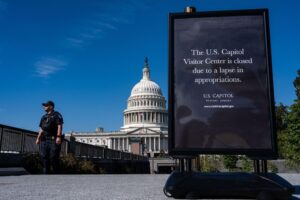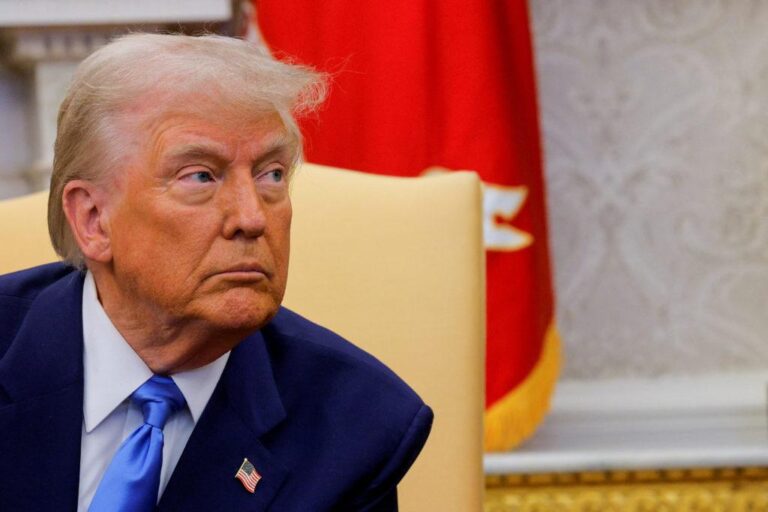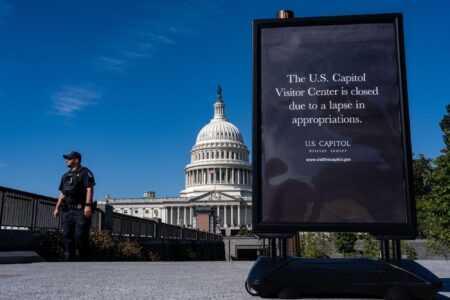Federal Art Management Faces Major Budget Cuts Under Trump Administration
The Trump administration has enacted substantial budget reductions targeting the federal office charged with overseeing the care and management of the United States’ extensive collection of approximately 26,000 artworks. This division, which plays a critical role in both preserving these cultural assets and ensuring public access to them, now confronts significant operational hurdles due to diminished funding. Art historians, curators, and cultural advocates have expressed deep concern that these financial constraints could undermine the upkeep and public engagement efforts surrounding the nation’s treasured government-owned art.
Opponents of the cuts argue that such fiscal retrenchment threatens the preservation of America’s diverse artistic legacy. The following outlines the primary consequences stemming from the recent budgetary reductions:
- Lowered conservation budgets: Essential restoration and preventive care projects face funding shortages.
- Scaling back public outreach: Educational programs and exhibitions are being curtailed.
- Staff reductions: Experienced art managers and support staff are being laid off or reassigned.
- Slowed digital initiatives: Progress on digitizing collections and enhancing online accessibility has been delayed.
| Division Responsibility | Budget Before Cuts | Budget After Cuts | Anticipated Consequence |
|---|---|---|---|
| Artwork Restoration | $12 million | $7 million | Fewer restoration projects completed |
| Public Exhibitions | $8 million | $4 million | Reduced number of events and outreach |
| Personnel Costs | $10 million | $6 million | Decline in full-time art specialists |
| Digital Cataloging | $5 million | $3 million | Delayed updates to online archives |
Consequences for Art Preservation and Security Measures
The restructuring and downsizing of the federal art management division have ignited widespread apprehension regarding the future care of the nation’s priceless art collection. With fewer resources and personnel, the meticulous attention required to safeguard these cultural treasures is at risk. Experts warn that the cutbacks could lead to postponed conservation efforts and weakened security protocols designed to protect artworks from theft, vandalism, and environmental harm.
Moreover, the loss of experienced staff threatens the continuity of institutional knowledge vital for effective stewardship. Key ramifications include:
- Reduced surveillance and monitoring: Staffing shortages mean less frequent inspections and slower responses to potential risks.
- Growing maintenance backlog: Urgent restoration needs may be deferred, accelerating the deterioration of artworks.
- Limited public access: Resource constraints could force cutbacks in loan programs and exhibitions, diminishing community engagement.
| Category | Status Before Cuts | Status After Cuts |
|---|---|---|
| Conservation Staff | 45 employees | 20 employees |
| Annual Security Reviews | 4 audits | 1 audit |
| Exhibitions on Loan | 12 events | 5 events |
| Preservation Funding (in millions) | $8.6 million | $3.2 million |
Voices of Concern from Museum Experts and Cultural Advocates
Professionals within the museum sector and cultural preservation communities have strongly criticized the budget cuts, emphasizing the threat they pose to the care and longevity of the nation’s 26,000 invaluable artworks. Many highlight that the division has been pivotal not only in physical conservation but also in provenance research and facilitating public access. The funding reductions are viewed as a regression in the ongoing mission to protect America’s cultural patrimony amid growing challenges.
Advocates have identified several critical issues arising from the cuts:
- Weakened oversight: Potential lapses in verifying artwork authenticity and acquisition standards.
- Delays in conservation: Longer wait times for restoration and diminished preventive maintenance.
- Reduced public engagement: Fewer educational initiatives and exhibitions that connect communities with their artistic heritage.
| Area of Impact | Likely Outcome |
|---|---|
| Artwork Maintenance | Increased risk of damage and decay |
| Historical Research & Provenance | Incomplete or inaccurate records |
| Community Programs | Decline in outreach and educational opportunities |
Strategies to Safeguard America’s Cultural Legacy
To ensure the continued protection and celebration of the United States’ extensive art collection, it is imperative to restore and enhance funding and staffing levels for the federal division responsible for their care. Employing skilled professionals dedicated to cataloging, conserving, and restoring artworks across various media and historical periods is essential. Furthermore, fostering collaboration between federal, state, and local cultural organizations can create unified conservation frameworks and facilitate knowledge sharing.
Recommended actions to strengthen preservation efforts include:
- Boosting budget allocations specifically for art conservation and maintenance programs
- Developing advanced digital cataloging and asset management systems to improve tracking and accessibility
- Organizing nationwide training sessions and workshops for curators and conservators to enhance expertise
- Encouraging public-private partnerships to expand resources and increase community involvement
| Focus Area | Suggested Initiative | Expected Benefit |
|---|---|---|
| Funding | Reinstate and increase division budgets | Ensures long-term viability of preservation projects |
| Human Resources | Recruit specialized conservators and catalogers | Enhances maintenance quality and authenticity verification |
| Technology | Implement comprehensive digital asset management platforms | Improves documentation and public access |
| Community Outreach | Expand educational programs and exhibitions | Fosters greater public awareness and cultural appreciation |
Final Thoughts on Federal Art Management Changes
The Trump administration’s decision to drastically downsize the federal division overseeing tens of thousands of American artworks represents a significant shift in how the nation’s cultural assets are managed. As this restructuring unfolds, the art community and public alike remain vigilant about the potential long-term effects on preservation, accessibility, and stewardship. The coming months will be critical in determining how these changes influence the future of public art and cultural heritage in the United States.





